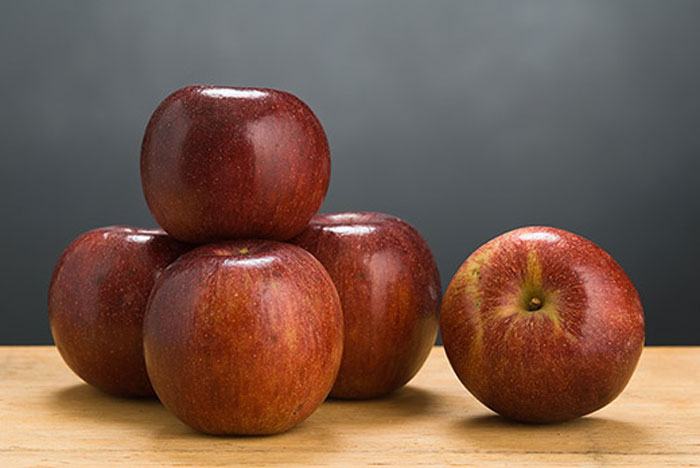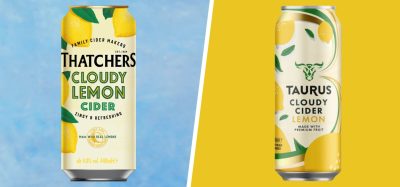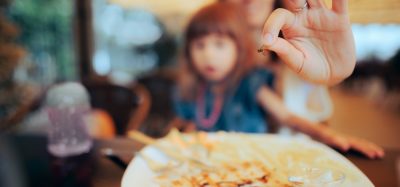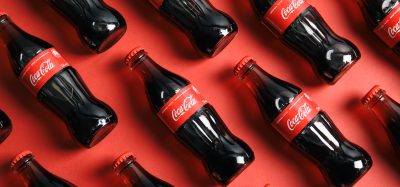Disease-resistant apples perform better than old favourites
- Like
- Digg
- Del
- Tumblr
- VKontakte
- Buffer
- Love This
- Odnoklassniki
- Meneame
- Blogger
- Amazon
- Yahoo Mail
- Gmail
- AOL
- Newsvine
- HackerNews
- Evernote
- MySpace
- Mail.ru
- Viadeo
- Line
- Comments
- Yummly
- SMS
- Viber
- Telegram
- Subscribe
- Skype
- Facebook Messenger
- Kakao
- LiveJournal
- Yammer
- Edgar
- Fintel
- Mix
- Instapaper
- Copy Link
Posted: 15 November 2017 | George Smith (New Food) | No comments yet
New, hardier cultivars of apple can be stored for as long or longer than their traditional forefathers.


CRUNCH TIME: Wine Crisp apples were among those put to the test by scientists. Photo: David Riecks
A study conducted by researchers at the University of Illinois has put scab-resistant strains to the test.
They examined how the varieties, including GoldRush, WineCrisp, CrimsonCrisp, and Pixie Crunch, fared when they were exposed to 1-methylcyclopropene (1-MCP), a gas now commonly used in the industry to inhibit ethylene production and slow ripening of stored fruit.
Aspects of nutritional quality and commercial viability were tested in the fruits after 70 and 140 days of storage.
In general, the eating quality – flesh firmness, sugar content, and acidity – of the scab-resistant cultivars was as good or better than Golden Delicious, before and after storage. Two of the scab-resistant cultivars, GoldRush and CrimsonCrisp, had significantly more antioxidant capacity, even after 140 days. The cultivars varied in their responsiveness to 1-MCP, with CrimsonCrisp showing the most promise for long-term storage using the product.
The results were published in the Journal of Food Quality.
Mosbah Kushad, an Associate Professor of Horticulture in the Department of Crop Sciences and Horticulture Extension Specialist at the University of Illinois, took a leading role in the work.
He said: “What the article is saying is that the quality of the scab-resistant cultivars is very comparable to standard varieties. In terms of nutrition, health benefit, aesthetic, and taste, these apples are competing very well. As an alternative to scab-susceptible types, they will be very attractive, especially for organic growers.”
And although you may not see WineCrisp on the grocery store shelves yet, Kushad points out that it and the other cultivars can be found in some local farmer’s markets and orchards. “You’ll see them in the smaller places first, but as volume builds in the top apple-growing states, they’ll start showing up in the big grocery stores. I have no doubt.”
Apples are attacked by all sorts of pests, but apple scab, a fungus, is hugely damaging to farmers. It can cause yield losses up to 80 per cent. For traditional apple cultivars and many newer ones, including Honeycrisp, combating apple scab and other diseases means applying multiple pesticides several times throughout the growing season.
Since the gene for scab resistance was discovered by a University of Illinois scientist in 1944, a number of resistant cultivars have been developed. Kushad said the early cultivars weren’t particularly good, but more recent ones show a lot of promise.
“WineCrisp, for example, is a very attractive and flavorful apple,” he says. “It’s not very large, but who wants to buy an apple that weighs a pound?”
A new wave of scab-resistant apples has been developed and tested as part of a cooperative breeding programme through University of Illinois, Rutgers University, and Purdue University. So far, several cultivars have proven to be as nutritious or even better for you than older types, but until now, it wasn’t clear whether their quality held up over time.
The article, “Influence of 1-methylcyclopropene treatment on post-harvest quality of four scab (Venturia inaequalis)-resistant apple cultivars,” is published in the Journal of Food Quality. The study is authored by Moises Zucoloto, Kang-Mo Ku, Moo Jung Kim, and Kushad.








